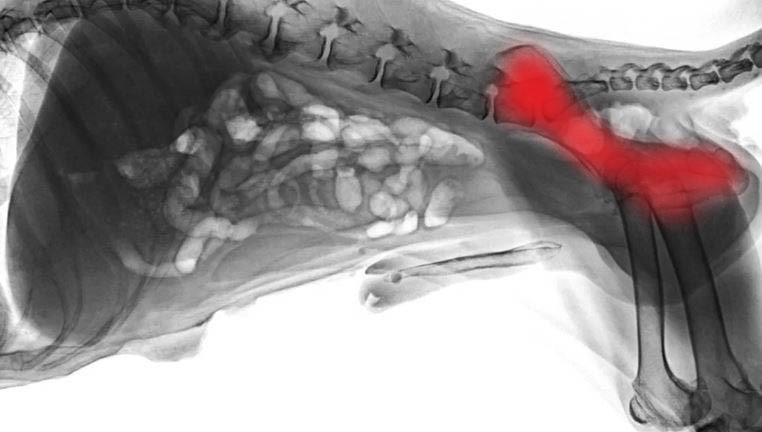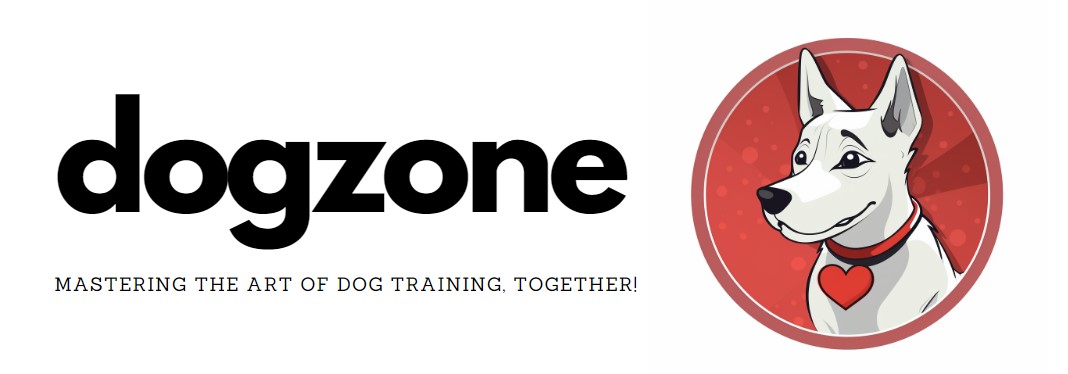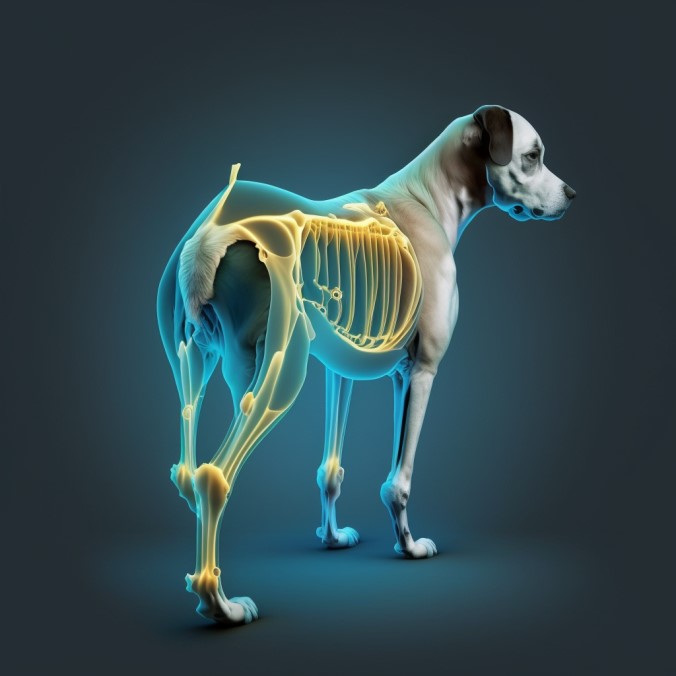Hip Dysplasia is one of the most well-known health problems when it comes to dogs. While this joint problem most commonly effects large breeds, dogs of any size can be diagnosed.
In this piece I’ll discuss the condition, what breeds are most at risk from hip dysplasia, as well as treatment and what steps you can take if you are working with a breeder to try and make sure you get a healthy pup.
The basics of hip dysplasia
Hip Dysplasia, also known as CHD results in the looseness of the dog’s hip joints. The muscles around the hip become unstable, making them unable to properly support the ball and socket of the hip.
The ball and socket begin to move apart (technically called subluxation), causing all the problems associated with Hip Dysplasia.

Symptoms of hip dysplasia
The following are signs your dog may have hip dysplasia:
- Wobbly gate.
- Limping or lameness.
- Dog moves in “bunny hops” (moving both back legs together).
- Stiffness of the joints.
- Hesitance to climb stairs.
Note that while hip dysplasia often affects one hip more severely than the other, sometimes both hips can be Dysplastic.
What breeds are more prone to hip dysplasia
While any dog can be affected by hip dysplasia, large dogs are more prone to the condition. Of note, the following specific breeds are the most common treated by veterinarians for the condition:
- Germain Shephards
- Labrador Retrievers
- Rottweilers
- Mastiffs
- Great Danes
- Golden Retrievers
- English Bulldogs
- Basset Hounds
- Pugs
How is hip dysplasia treated?
Treatment of dogs with dysplastic hips can vary depending on the severity of the condition. Some dogs and puppies will be placed on joint supplements (including, but not limited to Glucosamine, MSM, Ester-C) to support mobilisation, as well as NSAIDS (cosequin, or adequan are commonly used) for pain relief and activity restriction.
If a dog is overweight, slimming down can vastly improve their quality of life. Some individuals have had good luck with chiropractic and acupuncture treatments.
Like with many health conditions affecting our dogs, assessing diet (both previous and future) can dramatically effect the health and wellbeing of your dog.
Surgical options for hip dysplasia
If the condition is severe it is possible to undertake one of the following surgical procedures:
Femoral Head Ostectomy (FHO)
During this surgery the head of the femur is removed, thus relieving pain and creating a false joint between the femur and the acetabulum (hip bone). There may be a change in a dog’s movement with this false joint, but most discomfort should be relieved.
Triple Pelvic Osteotomy (TPO)
During this surgery the pelvis is cut in 3 places and rotated to give greater coverage to the head of the femur to solve the Dysplasia and relieve pain. This is a very involved and specialized surgery.
Total Hip Replacement (THO)
This is a very pricy surgery and isn’t an option for every owner. In this operation the head and neck of the femur as well as the acetabulum is replaced. This type of surgery can only be preformed on mature dogs, as the bones need to be strong enough to hold the artificial ball and socket. The rate for complications after this procedure is slightly higher than for other surgeries of this type.
How to prevent hip dysplasia in dogs
Understanding how to prevent hip dysplasia in our dogs starts with knowledge of the causes. The condition has both genetic and an environmental components, so let us assess both.
If you are looking into purchasing a dog from a breeder, make sure their parents have been through OFA (Orthopedic Foundation for Animals) screening and/or PennHip. Any reputable breeder will have ensured all health checks have been done on the parents prior to breeding, and if they haven’t you should consider this a warning sign. You should also consider this one of the reasons a reputable breeder charges more than alternative options.

Please note that adult dogs with normal hips can still produce puppies with bad hips.
If your new puppy has not come with prior health checks of the parents, then it is possible to have them checked for hip dysplasia at 4-6 months of age. This is done with a simple x-ray.
The following considerations will help you preventing hip dysplasia in your dog:
- A diet (or dog food) of a good standard, with high quality animal ingredients inclusive of meat, fat, and organs, as well as omega fatty acids, fish oil, or alternative oils such as coconut oil. When feeding a dry diet, it is possible to add beneficial foods to their diet to protect joints.
- Many joint supplements are available containing all manner of ingredients to support joint health. These will likely include glucosamine and chondroitin, with typical ingredients being cartilage, green or blue-lipped mussels, or fish oils. Popular brands in Australia to support joint health are Sasha’s Blend, Antinol, and 4-Cyte.
- Do not over exercise and pay careful attention to signs of injury and pain. This is especially the case during the puppy phase where you may assume your dog can exercise for a long period of time, and they will oblige, but this can be damaging to their health.
Environmental Factors For Puppies
Keep puppies on the lean side – No, this does not mean UNDERFEEDING your puppy! It means you shouldn’t overfeed and have a butterball turkey for a pup!
Rapid growth can contribute to hip problems, so feed a high quality diet free of fillers, sugars and artificial additives.
Research has shown neutering or spaying a puppy at a young age can lead to excessive growth, so consider when you choose to have this done based on your specific breed and advice from both your breeder and veterinarian.
Take Exercise Slow – While puppy joints are still forming it is important that they are treated gently. Jogging and running with your dog are a no-no until your pooch reaches maturity. Don’t allow excessive high jumping – especially with larger and giant breeds.
Supplement Carefully – Supplementing with a mobility supplement during puppy hood can be a great choice, but stay away from extra calcium and phosphorus.



Leave a Reply